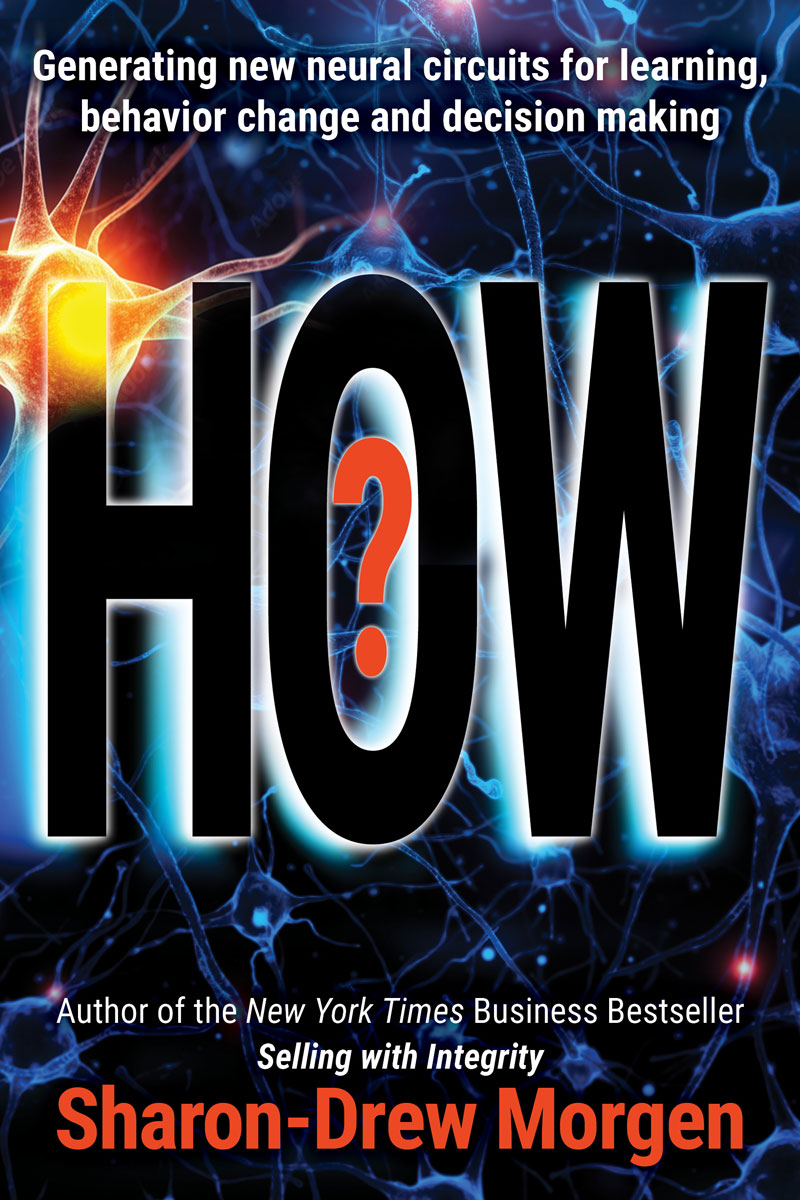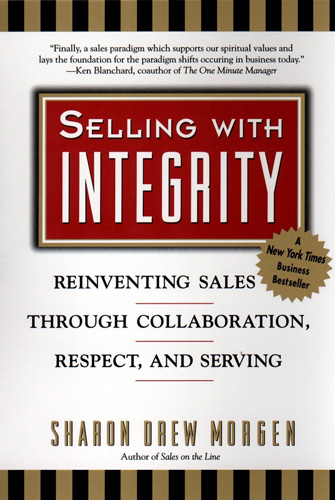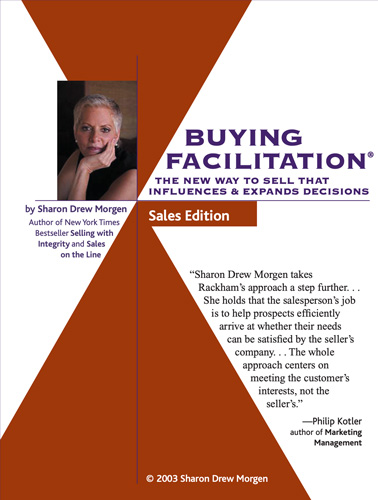 Have you ever wondered why people agree to an appointment from your prospecting calls? Obviously, it’s not because they need your solution or they’d close more consistently after your visit. You’re charming, your solution great, your pitch deck is creative and your content informative. So it’s not you or your solution.
Have you ever wondered why people agree to an appointment from your prospecting calls? Obviously, it’s not because they need your solution or they’d close more consistently after your visit. You’re charming, your solution great, your pitch deck is creative and your content informative. So it’s not you or your solution.
But ask yourself: if people agree to a meeting but are not likely to buy, why did they take the meeting? Choose one from below:
- They needed information to help them resolve their problem internally, without you.
- One or two people from a team are gathering information to convince others of possible solutions for a need not yet fully established.
- They’re comparing your information against your competitors.
- One or two people are representing the team as they progress toward resolving a problem and they need ideas to discover their own workarounds.
With a goal to get an appointment, you’re wasting valuable time chasing after folks who aren’t ready to buy, or aren’t buyers at all. You’re:
- creating a double sale – the first being to get them to buy the appointment;
- calling people who haven’t (yet) self-identified as buyers, are in the middle of their discovery process, and don’t see a need for an appointment or they would have contacted you;
- placing hundreds of calls to get one appointment when you could use the same time/effort to actually find a real buyer and make a sale.
By seeking anyone who will take an appointment, you’re making it possible for folks to use you to glean information. But there’s a bigger downside: you’re not recognizing or serving people on route to becoming buyers – real prospects who WILL buy when they complete their change/decision process.
WHAT YOU MISS WHEN SEEKING AN APPOINTMENT
With a ‘need’ and ‘appointment’ focus, you’re missing real prospects on route to becoming buyers but haven’t completed their journey.
Instead, seek out folks in the process of becoming buyers and facilitating their necessary Pre-Sales change management journey – the Buy Side. After all, until they’ve got their ducks in a row, and understand their risk of change and get buy in, they won’t even look at marketing or sales content!
Unfortunately, the sales model overlooks this entire group of highly viable prospects. But if you seek folks in the process of solving a problem in your area of expertise and help them through their change and risk management decisions, they’ll buy quickly.
The missing piece here is the difference between the two buying processes: the Sell Side and the Buy Side. And the Buy Side has very specific considerations currently overlooked by the Sell Side.
THE SELL SIDE VS THE BUY SIDE
By contacting people with only a sales hat on, before they’ve
- completed assembling their full set of stakeholders,
- recognized the criteria that defines their problem,
- tried familiar workarounds,
- assessed their risk and found it manageable,
you’re discarding highly qualified prospects (40%) who won’t take a meeting but could use your help. By overlooking the Buy Side decision process, you’re missing your sweet spot: helping people as they fumble through their factors to determine if their risk of going ‘outside’ (to buy something, to bring in a consultant, etc.) is worth the disruption that bringing in something new causes.
Turns out that risk is the deciding factor if someone buys, not need; defining and controlling for it constitutes 70% of their decision path! And this must occur before they can buy anything, regardless of need.
The sales model has no relevance in the Pre-Sales change management decisions all people take before self-identifying as buyers. Consequently, selling doesn’t cause buying as they are two wholly different concepts: A buying decision is relational – change management and risk driven; sales is tactical – solution placement driven.
When people have a problem they don’t BEGIN by considering or making a purchase (tactical), but by figuring out all the systemic stuff they need to figure out (relational) to end up with a change that aligns with internal norms. No one wants to buy anything, merely resolve a problem at the least risk to their culture/system.
By focusing on getting appointments, you’re not only overlooking and discarding these very viable prospects, you’re neglecting a perfect opportunity to get on their side of the table and provide value-add that would facilitate them through the steps they must take before they’re buyers. It’s only when their
- change management work is complete
- AND all (all!) stakeholders are involved
- AND they’ve realized they cannot resolve the problem on their own
- AND they have the buy-in to proceed
- AND they understand the ‘cost’ (risk) of any change caused by a new solution,
that they’re buyers.
This is where they ‘go’ when you think they’re dragging their feet or having ‘indecision’. By helping them precisely where they need help, you’re collapsing the sales cycle by at least half and creating a competitive advantage. And most of my clients end up on the Buying Decision Team because they’ve been so helpful.
But this requires you begin with a different goal and new skills, seeking people on route to change in the area you can support. Because their Pre-Sales change work is based on people, policy, buy-in, change, and resource, you’d be meeting them on the Buy Side.
Remaining on the Sell Side ensures you’ll only find the low hanging fruit – people who are ready to buy and considering your competitors – when it’s so easy to find folks on route to buying and facilitating their journey.
DALE CARNEGIE DID IT SO YOU DON’T HAVE TO
In 1937, Dale Carnegie told you to make face-to-face sales calls. In those days, there was little choice: cars were rare and quite expensive, phones were party line, and advertising was the Sears Catalogue that came out once a year.
These days, the internet transmits your content making your pitch unnecessary. But it’s much bigger than that; buying decision teams are no longer in one venue; people have partners and old vendors willing to help them resolve problems; and the time it takes them to understand if the risk of change carries too much disruption is the length of the sales cycle.
Before anyone becomes a buyer they have internal change work to do. To truly facilitate this end of the buying decision path, it takes a new goal at the beginning (find folks IN their change process instead of trolling for ‘need’ or appointments) and wholly new skills.
I’ve invented a facilitation model (Buying Facilitation®) that begins with a ‘change’ focus and finds and serves these folks on route to becoming buyers but can’t consider themselves buyers until they’ve managed all the change issues and understand their internal risk.
With a goal of finding people during their change/decision cycle, Buying Facilitation® closes 40% from first call by facilitating them down their essential change/decision steps and then selling: Once they’ve discovered ALL the stakeholders, understand the full fact pattern, gotten buy-in and establish risk tolerance, then they’re ready to buy. They might even ask you to visit them and will have 10 people present. Then you’re a true servant leader.
I’m suggesting you expand your skill set to add ‘facilitate the Pre-Sales buying decision path’ before you sell. You can use this on your cold calls and close 40% from first call. Otherwise, you’re wasting so much of your valuable time seeking appointments with people who aren’t buyers.
______________________________
Sharon-Drew Morgen is a breakthrough innovator and original thinker, having developed new paradigms in sales (inventor Buying Facilitation®, listening/communication (What? Did you really say what I think I heard?), change management (The How of Change™), coaching, and leadership. She is the author of several books, including her new book HOW? Generating new neural circuits for learning, behavior change and decision making, the NYTimes Business Bestseller Selling with Integrity and Dirty Little Secrets: why buyers can’t buy and sellers can’t sell). Sharon-Drew coaches and consults with companies seeking out of the box remedies for congruent, servant-leader-based change in leadership, healthcare, and sales. Her award-winning blog carries original articles with new thinking, weekly. www.sharon-drew.com She can be reached at sharondrew@sharondrewmorgen.com.







2 thoughts on “Seeking Appointments is Costing You Sales, by Sharon-Drew Morgen”
This is a great post, Sharon-Drew.
Especially for SDRs like me who are feeling 60+ calls a day, burning your territory as fast as possible, and having no leads after to prospect because of that. If only more Sales leaders knew about this… We can only hope.
Tony – thanks for the kind words. I’m a bit confused…In the article, I mention the model (my Buying Facilitation(r) model) that can be taught to sales folks to fix the problem. But I didn’t teach the model. I hope you realize that there is no ‘how to’ in the article. Contact me sharondrew@sharondrewmorgen.com or go to my website -www.sharon-drew.com – to read/learn more. But note: to actually LEARN the material takes a bit of time as it is NOT a sales model, nor does it use any sales skills. Happy to discuss. Thanks for your kind words. SD